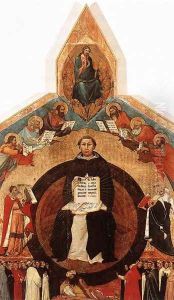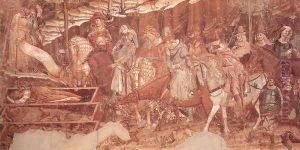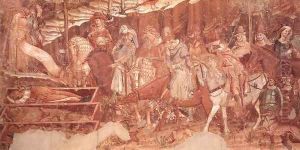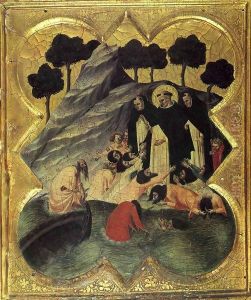Francesco Traini Paintings
Francesco Traini was an Italian painter who was active during the 14th century, specifically in the Trecento period, which is part of the Italian Gothic style. There is some debate about the exact dates of his birth and death, but he is generally thought to have been born around the second or third decade of the 1300s and to have died after 1365. Traini was based in Pisa, and his work is representative of the Pisan Gothic style that flourished during that time.
Traini's most famous work is the 'Triumph of Death' fresco, which is located in the Camposanto Monumentale of Pisa. This work is highly emblematic of the macabre and didactic themes that were prevalent in European art as a response to the Black Death and the general preoccupation with mortality during the Middle Ages. The fresco depicts a range of social classes being confronted by the figure of Death, illustrating the universality of the human experience of death.
Another significant work attributed to Traini is the 'St. Thomas Aquinas' altarpiece, which portrays the saint surrounded by allegorical figures of the virtues and the sciences, emphasizing the intellectual and spiritual contributions of Aquinas. This altarpiece is a testament to Traini's ability to marry religious iconography with a narrative that was accessible and inspirational to the faithful.
The pictorial style of Traini is characterized by its elegance, the use of line to define forms, and the subtle use of color. His figures often have elongated, graceful proportions, reminiscent of the Byzantine influence that remained strong in Italian art of this period. However, Traini also began to explore more naturalistic approaches to space and figure representation, which foreshadowed the developments of the early Renaissance.
Despite the fame of his existing works, much of Traini's life and career remain obscure, and many details about his training, his patrons, and the full scope of his oeuvre have been lost to history. Nevertheless, Traini remains an important figure in the history of Italian Gothic art, and his works continue to be studied for their artistic and historical significance.



